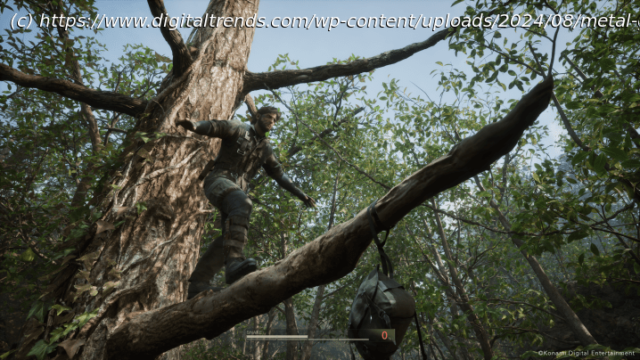We’ve played the first 90 minutes of Metal Gear Solid Delta: Snake Eater, which barely alters the PS2 classic at all.
There are two ways to remake a video game. On one hand, you can take the transformative route and reimagine a classic through a new lens. That’s a risky option that could tick off purists, but one that can result in a project that stands on its own rather than in another game’s shadow. Then there’s the much safer route: giving players as much of a 1:1 experience as possible for a more surefire win with a lower-legacy ceiling.
If you’re having trouble picturing the difference between the two, Konami is modeling exactly what that looks like. Its upcoming Silent Hill 2 remake is faithful to the original horror game, but feels like developer Bloober Team’s own bespoke spin on a classic. Metal Gear Solid Delta: Snake Eater, on the other hand, sits at the completely opposite end of the spectrum. Hardly a hair on its head appears to be touched.
That’s at least the sense I got after playing through an early version of Metal Gear Solid Delta’s opening 90 minutes. Those who were worried that Konami might bungle Hideo Kojima’s vision can rest easy: The remake almost feels petrified of enraging its staunchest fans. While that means that we’re all but guaranteed a great game, its lack of ambition does make me wonder what this version brings to the table outside of modern graphics.Virtuous mission
What’s funny about demoing a faithful 90 minutes of Metal Gear Solid 3 is that the play session translates to maybe 10 minutes of actual hands-on gameplay, tops. Snake Eater’s opening is a long-winded one filled with exposition, Cuban missile crisis history lessons, and wordy tutorials. Those long cutscenes didn’t just give me a chance to remember how strange and wonderful Snake Eater’s story is; it gave me a lot of time to study the remake’s aesthetic changes. And there are less of them than you might think.
The biggest change is its visual overhaul, which makes the PlayStation 2 classic look more like a modern game. There are some subtle changes here, like the fact that you can now see damage build up on Snake’s body and uniform. The most notable departure from its predecessor is rebalancing the original’s yellow color tint that makes its forests look like they’re baking under a heat lamp. Instead, it opts for a less-stylized palette with a modern sheen. It’s not the kind of thing that new players will notice, let alone care about, but it does take a signature glow out of the image.
Aside from that change, Metal Gear Solid Delta sticks to the script. Cutscenes are glossier, but they’re shot-for-shot re-creations of their counterparts. Konami even resists the urge to overhaul level design now that it isn’t working with the PS2’s limitations. Rather than turning the original map into an interconnected jungle, it’s still a collection of bite-sized rooms split up by loading screens.
The more I play, the more I get the sense that Konami was sweating bullets when it embarked on this project. It seems aware that the idea of remaking a Metal Gear Solid game without Kojima’s involvement would put a target on its back. During an interview at the preview event, I asked producer Noriaki Okamura how much the remake team reached out to the original developers for guidance on the project.






